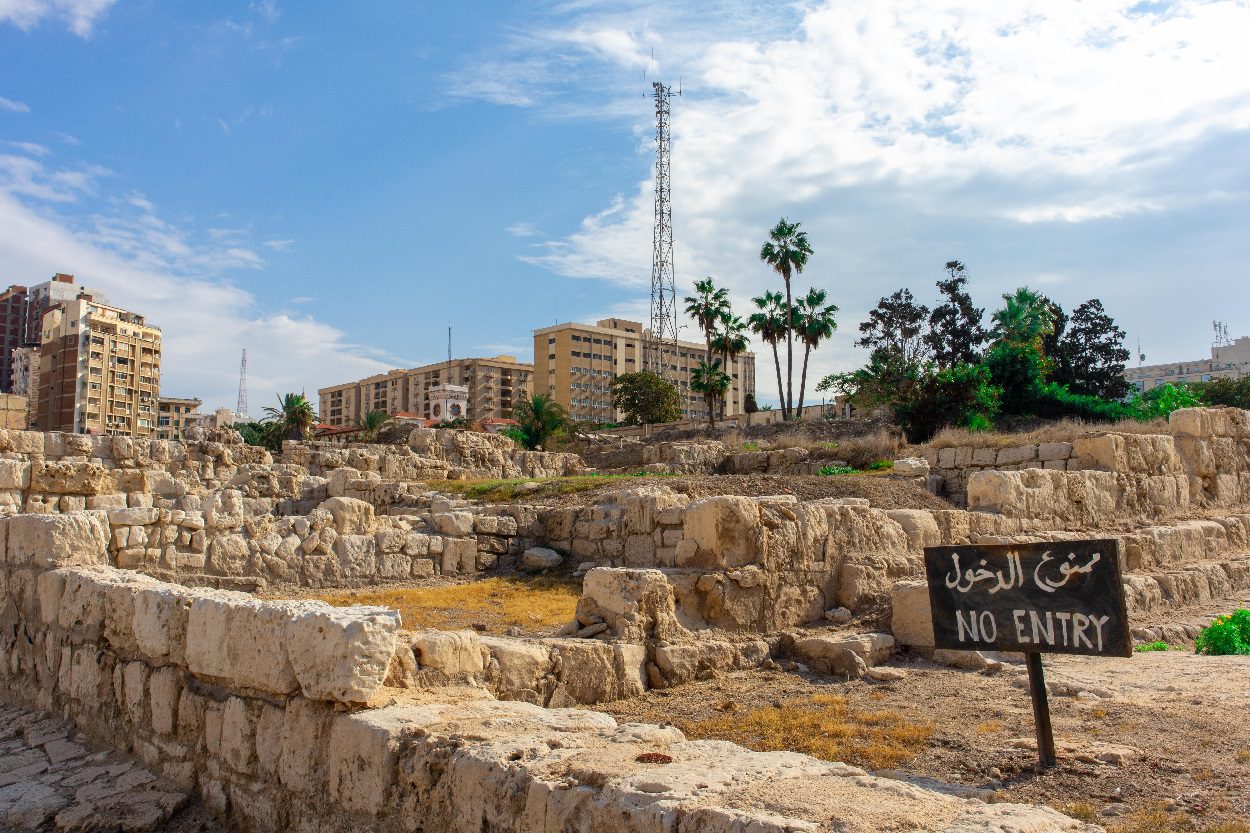A Polish-Egyptian team of archaeologists have recommenced excavations at Kom El-Dikka in Alexandria, Egypt.
Alexandria (as the new capital of Egypt) was founded by its namesake – Alexander the Great in 332 BC, who drove the Persians from Egypt.
The Ptolemaic dynasty, which was founded by one of Alexander’s generals, contributed to the development of the city into a major cosmopolitan metropolis. By the time of Augustus during the Roman period, the city grid encompassed an area of 10 km2 (3.9 sq mi), and the total population was around 500,000–600,000.
Kom El-Dikka was a high-status residential district, and later it became a major civic centre with a bath complex (thermae), auditoria (lecture halls), and a theatre. Today, Kom el-Dikka is the largest and most complete above ground archaeological site in Alexandria. It provides large amounts of evidence of urban life in Roman Egypt, including early villas and their mosaics, and late Roman public works.
The researchers are excavating several 1st to 3rd century AD dwellings from the Roman period, in addition to several antique cisterns and an artificial hill created as a result of human activity between the thermal baths and the theatre.
Dr. Grzegorz Majcherek, from the Centre of Mediterranean Archaeology of the University of Warsaw, said: “Excavations are underway in ancient cisterns supplying water to the nearby Imperial baths. Our primarily goal is to identify the subsequent construction phases and determine the chronology of this unique site. It is the only example of this type of building in Egypt, rising high above the surrounding area and acting as a water tower”.
Previous excavations of the dwellings have revealed multi-coloured mosaic flooring, including a mosaic with depictions of lotus flowers that indicates the high status of the occupants. A recent survey suggests that further mosaics are waiting to be uncovered despite the destruction of the 3rd century and robbing of the Roman building material.
In 2004, Dr. Grzegorz Majcherek, announced the discovery of a large complex of well-preserved lecture halls from the late antiquity (5th-7th centuries AD). These are the only material remains of the ancient university known from the Mediterranean area.
Header Image Credit : Shutterstock





